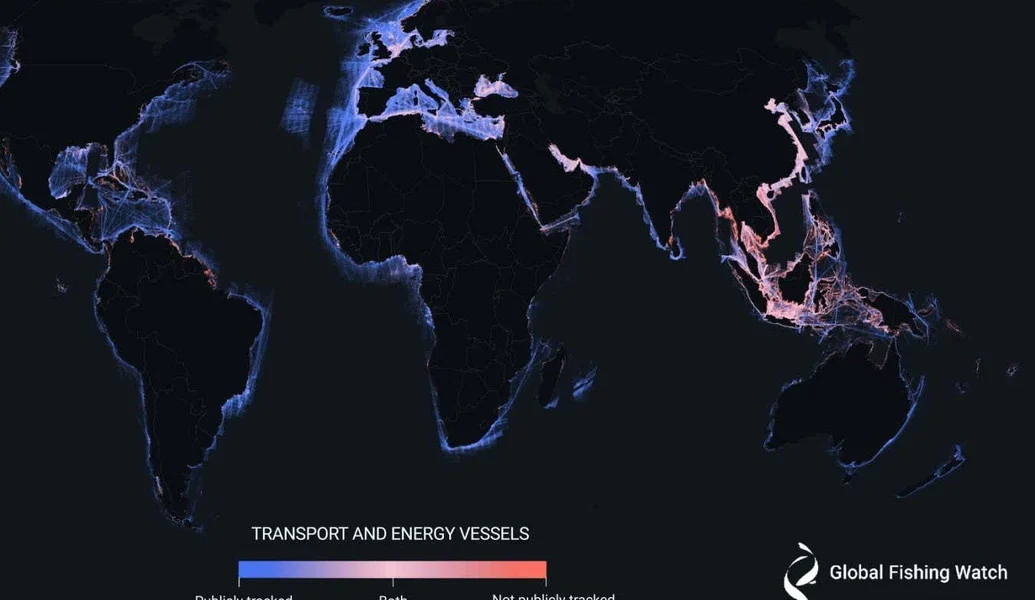Most large fishing boats go untracked as ‘dark vessels’
An analysis of satellite images using Artificial Intelligence has revealed that a significant portion of the world’s large fishing boats and other industrial vessels do not publicly share their location. This finding sheds light on the extent of untracked activities impacting the oceans.
Unveiling Untracked Vessels
According to a report by Global Fishing Watch, a non-profit organization based in Washington DC, three-quarters of the world’s large fishing boats and a quarter of transport and Energy ships are categorized as “dark vessels,” meaning they do not publicly broadcast their location. The study’s co-author expressed astonishment at the scale of untracked maritime activities.
The analysis involved the use of satellite images, including radar images that can penetrate through clouds and darkness, taken over a four-year period from 2017 to 2021. These images covered coastal regions where most large-scale fishing and other industrial activities occur. Using AI technology, researchers trained algorithms to detect, categorize, and differentiate boats and offshore structures within the dataset.
The AI Insights
By comparing the global map of vessels with a database of boats that publicly broadcast their location, the researchers made a disconcerting revelation. The majority of the large fishing boats and a significant portion of transport and Energy ships were found to not be utilizing their automated identification systems. While such identification is not always mandatory, the absence of its use may point to potential illegal fishing and other unauthorized activities.
Within the dataset, one AI was trained to identify fishing vessels from other types of boats based on their travel patterns and locations. This categorization revealed that between 42 and 49 per cent of the approximately 63,000 vessels fell into the classification of fishing vessels. Additionally, other AI algorithms identified approximately 28,000 offshore structures related to wind power generation and oil production.
Rising Offshore Activities
The study also highlighted the growing presence of offshore developments, with swarms of offshore wind turbines surpassing traditional petroleum infrastructure such as oil rigs. The researchers emphasized the accelerating growth of offshore developments and non-fishing ship activities, which are encroaching on fishing grounds and contributing to the increasing congestion in the world’s oceans.
While fishing activity has reached its peak, the expansion of offshore developments requires comprehensive monitoring. The increasing complexity of maritime activities demands a thorough understanding of how these different elements interact within the marine ecosystem.
Challenges in Monitoring
The study acknowledged that publicly available satellite imagery currently lacks the resolution to detect small fishing vessels less than 20 meters in length. Researchers from Microsoft and Harvard University, in an article commenting on the study, recognized the limitations but also highlighted the potential for these efforts to enhance monitoring of human activities near marine protected areas.
The revelation of ‘dark vessels’ raises critical concerns regarding the effective regulation and monitoring of maritime activities. By using advanced technologies such as Artificial Intelligence and satellite imagery, researchers have unveiled the substantial proportion of untracked vessels, prompting an urgent need for enhanced monitoring and regulation to ensure the sustainable management of ocean resources.
Source: newscientist








No Comments